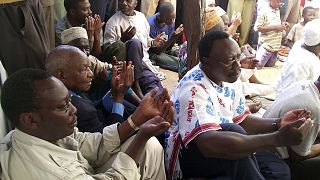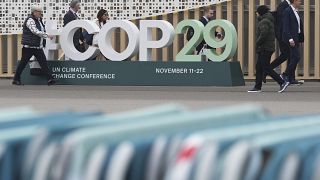Morocco
In the heart of the city of Marrakech, among its alleys and ancient markets, can be found an age-old Moroccan art - wool felt craft.
With roots going back centuries, it's a traditional craft that embodies the ancient cultural heritage of Morocco.
This craft however is facing major challenges that could lead to its extinction.
Mohammed Belkhou, one of its few remaining craftsmen, began wool felt craftwork 45 years ago.
Felting begins with the collecting of sheep wool, an essential raw material.
Wool is collected during the shearing season, where it's carefully sheared to maintain its quality.
Next, the wool is cleaned to remove impurities and dirt.
This stage requires lots of patience and skill to ensure the quality of the wool.
After cleaning the wool, it's combed using traditional tools made of wood and with metal teeth.
The carding process aims to straighten and soften the fibers, leading onto the spinning process.
After that, the wool is twisted by expert craftsmen like Belkhou.
In this process, the fibers are wrapped around each other to form strong, durable threads.
After that, a dense foam is created - the result of mixing hot water with black soap and turning it in circular motions with plastic fibers.
The foam is then applied in a specific way over the wool fibers to help solidify and transform into felt fabric.
Belkhou says the process requires physical strength and precision.
"When we were working on felt wool prayer rugs, mattresses or horse saddles, this required a lot of effort from us," he says.
"It was tiring before. We were forced to adjust the amount of black soap and also the soap foam had to be thick in addition to the difficult stage of squeezing."
The resulting felt may be used to make saddles, rugs, hats, traditional shoes, or even dolls and accessories.
The craftsmen shape the felt with care and precision, using hand tools and sometimes wooden blocks to determine the final shape.
Just one piece can take up to three days.
Belkhou says he doesn't work on saddles and rugs anymore, as demand has dwindled.
"There is no longer a demand for saddles, so currently, we are not working on it. For example, I have not made saddles for ten years," he says.
Traditional colors and patterns are added using natural dyes and age-old embroidery techniques.
Despite the felt craft's history, it faces many challenges that threaten its very existence.
One of the main challenges is a lack of trained craftsmen.
Young people find it difficult to engage in the craft, due to the lack of financial return and the great effort required.
In addition, high quality raw materials are becoming scarce, making it more difficult for artisans.
"When we go to the market, we do not find wool in large quantities. This is due to the fact that wool sellers have also become extinct, due to the lack of demand," says Belkhou.
In the face of challenges, efforts are being made to preserve the wool felt craft for future generations.
The Moroccan Ministry of Tourism, Crafts and the Social and Solidarity Economy has adopted a training program targeting young people to introduce them to the craft and teach them the necessary skills to practice it.
"We also organized training programs, according to new standards. Then we tried to involve various stakeholders from the public and private sectors in order to develop these crafts and find a new function for them," explains Hicham Berdouzi, regional director of the handicrafts sector.
The Ministry hopes to protect the felt craft, not only to preserve cultural heritage, but also to support the local economy.
"It's my first time, and I've never seen a craft like that. And they make hats and bags and loads and loads of different things," says British tourist, Jane.
"It's really unusual and a very good craft, it takes a long time."
The price of wool felt items ranges from 5 euros to 600 euros (approx. $5-649 USD).










02:19
From tattoos to bark cloths, Samoa keeps proud traditions alive
01:00
Record number mariachis belt out classic songs in Mexico City plaza
02:20
Morocco's museum of modern art celebrates 10-year anniversary
01:00
Juliette Binoche launches Paris Christmas window display
02:17
Akazehe: a unique Burundi greeting risks disappearing
01:09
Madagascar's model ship builders make country's crafstmanship shine